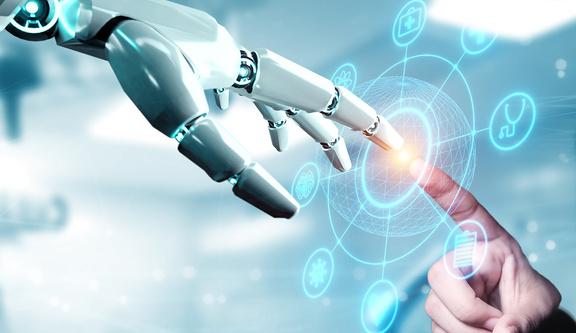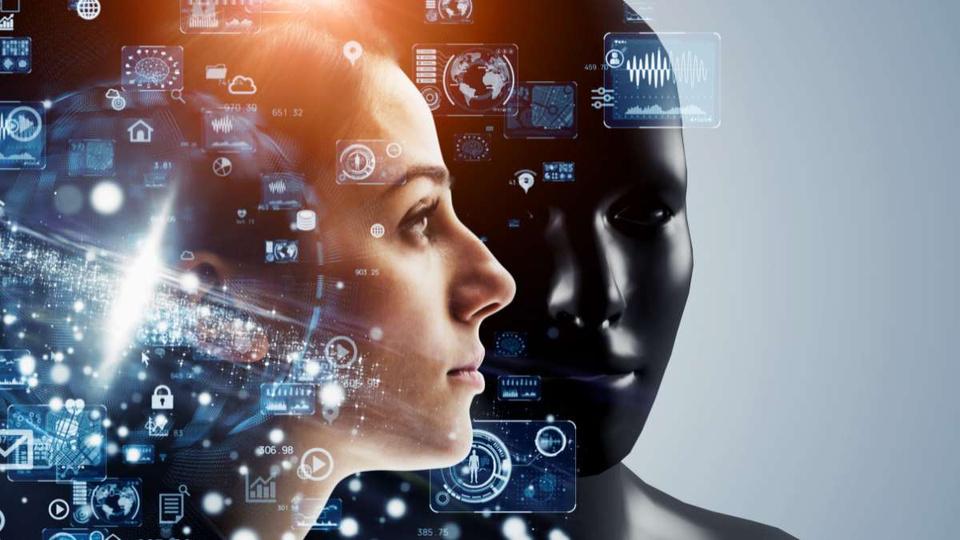
3 minute read
THE STORY OF AI
began in 1943 with the publication of the article "A Logical Calculus of Immanent Ideas in Nervous Activity" by Warren McCullough and Walter Pitts. In that work, the scientists presented the first mathematical model for the creation of a neural network
The first neural network computer, Snarc, was created in 1950 by two Harvard students: Marvin Minsky and Dean Edmonds That same year, Alan Turing published the Turing Test, which is still used today to assess AIs
Advertisement
In 1959, Arthur Samuel coined the term Machine Learning while working at IBM for his part, John McCarthy y Marvin Minsky They founded the MIT Artificial Intelligence Project In 1963, John McCarthy also created the "AI Lab" at Stanford University.
In the years that followed, doubts loomed over the field of AI. In 1966, the American ALPAC report revealed the lack of progress in research of machine translation aimed at simultaneously translating the Russian language in the context of the Cold War Many US government-funded projects were cancelled.
Similarly, in 1973, the British government published its "Lighthill" report highlighting the disappointments of AI research
Una vez más, los proyectos de investigation were reduced by budget cuts This period of doubt lasted until 1980, and is now called the "first winter of AI"
In 1952, Arthur Samuel created software capable of learning to play chess autonomously. The term artificial intelligence was first used at John McCarthy's "Dartmouth Summer Research Project on Artificial Intelligence" lecture in 1956
In that act, the researchers presented the objectives and vision of the AI Many consider this conference the true birth of artificial intelligence, as it is known nowadays


That winter ended with the creation of R1 (XCON) by Digital Equipment Corporations
This expert trading system is designed to set up orders for new IT systems, and sparked a veritable investment boom that lasted for more than a decade
Japón y Estados Unidos hicieron grandes inversiones en la investigación de la IA. Las empresas se gastaron más de mil millones de dólares al año en sistemas expertos y el sector no paraba de crecer.
Desgraciadamente, el mercado de las máquinas “Lisp” se desplomó en 1987 al surgir alternativas más baratas. Este fue el «segundo invierno de la IA». Las empresas perdieron el interés por los sistemas expertos. Los gobiernos de Estados Unidos y Japón abandonaron sus proyectos de investigación y se gastaron miles de millones de dólares para nada.
En 2012, Andrew Ng alimentó una red neuronal con 10 millones de vídeos de YouTube como serie de datos de entrenamiento. Gracias al Deep Learning, esta red neuronal aprendió a reconocer un gato sin que se le enseñara lo que es un gato. Este fue el inicio de una nueva era para Deep Learning.
Diez años después, en 1997, la historia de la IA estuvo marcada por un acontecimiento importante. La IA Deep Blue de IBM triunfó sobre el campeón mundial de ajedrez Gary Kasparov. Por primera vez, el hombre fue derrotado por la máquina.
Diez años después, los avances tecnológicos permitieron el resurgimiento de la inteligencia artificial. En 2008, Google hizo grandes avances en el reconocimiento de voz y lanzó esa función en sus aplicaciones para smartphones.
En 2016 se produjo otra victoria de la IA sobre el ser humano, con el triunfo del sistema AlphaGo de Google DeepMind sobre Lee Sedol, el campeón de Go. La inteligencia artificial también conquistó el campo de los videojuegos, especialmente con DeepMind AlphaStar en Starcraft u OpenAI Five en Dota 2.
Actualmente, empresas de todos los sectores utilizan el Deep Learning y el Machine Learning para infinidad de un aplicaciones. La IA no deja de avanzar y sorprender con su rendimiento. El sueño de la inteligencia artificial general se acerca cada vez más a la realidad.


Japan and the United States have invested heavily in AI research. The companies spent more than billion dollars a year in expert systems and the industry was growing.
Unfortunately, the market for "Lisp" machines collapsed in 1987 as cheaper alternatives emerged. This was the "second AI winter." Companies lost interest in expert systems. The US and Japanese governments abandoned their research projects and spent billions of dollars for nothing.
In 2012, Andrew Ng fed a neural network 10 million YouTube videos as a series of training data. Thanks to deep learning, this neural network learned to recognize a cat without being taught what a cat is. This was the beginning of a new era for Deep Learning.
Ten years later, in 1997, the history of AI was marked by an important event. IBM's Deep Blue AI triumphed over the world champion player Gary Kasparov. For the first time, man was defeated by machine.
Ten years later, technological advances allowed the resurgence of artificial intelligence. In 2008, Google made great strides in speech recognition and launched that feature in its smartphone apps.
In 2016 there was another victory for AI over humans, with the victory of Google DeepMind's AlphaGo system over Lee Sedol, the champion of Go.Artificial intelligence has also conquered the field of video games, especially with DeepMind AlphaStar in Starcraft or OpenAI Five in Dota 2.
Currently, companies from all sectors use Deep Learning and Machine Learning for an infinite number of applications The AI does not stop advancing and surprising with its performance. The dream of artificial general intelligence is getting closer and closer to reality.









